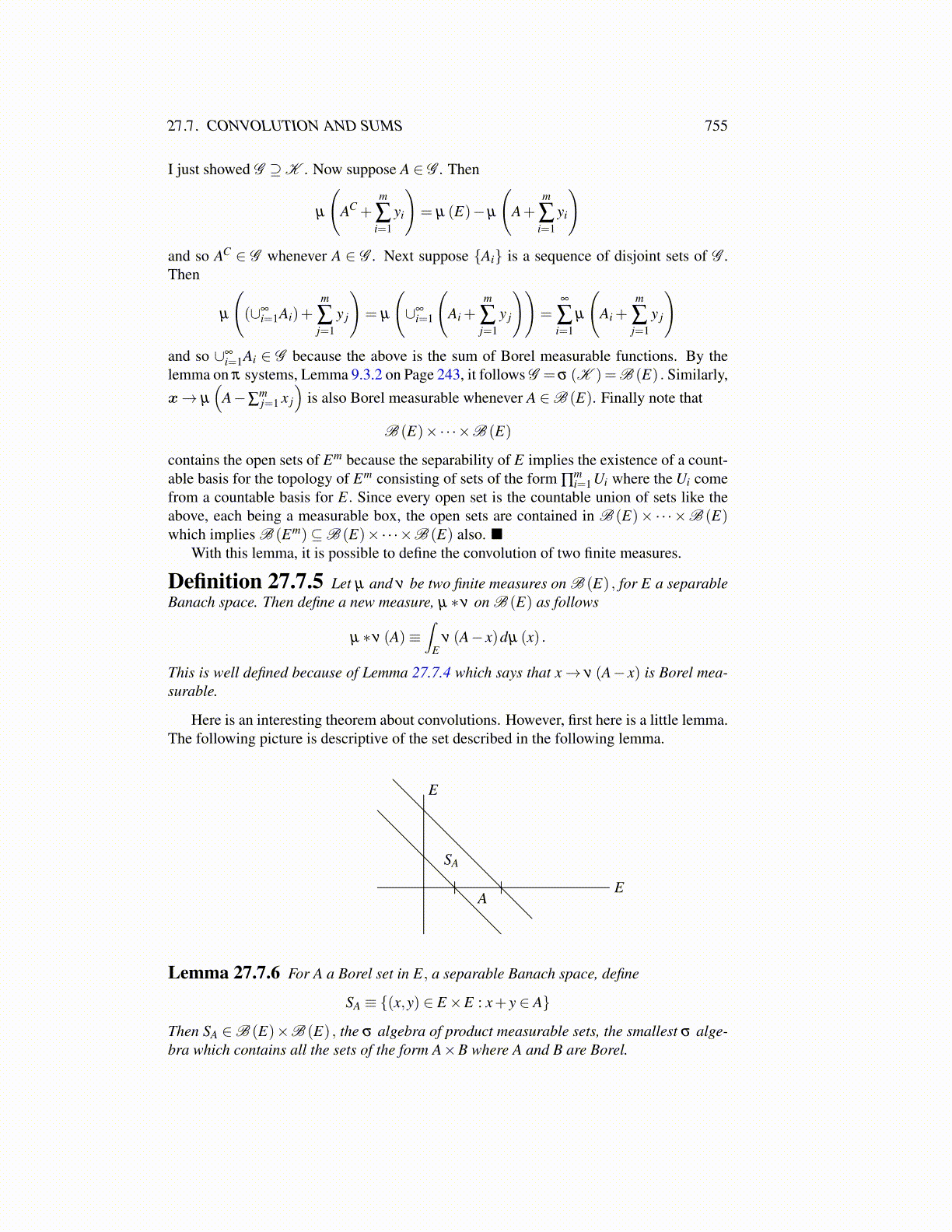
27.7. CONVOLUTION AND SUMS 755
I just showed G ⊇K . Now suppose A ∈ G . Then
µ
(AC +
m
∑i=1
yi
)= µ (E)−µ
(A+
m
∑i=1
yi
)and so AC ∈ G whenever A ∈ G . Next suppose {Ai} is a sequence of disjoint sets of G .Then
µ
((∪∞
i=1Ai)+m
∑j=1
y j
)= µ
(∪∞
i=1
(Ai +
m
∑j=1
y j
))=
∞
∑i=1
µ
(Ai +
m
∑j=1
y j
)and so ∪∞
i=1Ai ∈ G because the above is the sum of Borel measurable functions. By thelemma on π systems, Lemma 9.3.2 on Page 243, it follows G =σ (K )=B (E) . Similarly,x→ µ
(A−∑
mj=1 x j
)is also Borel measurable whenever A ∈B (E). Finally note that
B (E)×·· ·×B (E)
contains the open sets of Em because the separability of E implies the existence of a count-able basis for the topology of Em consisting of sets of the form ∏
mi=1 Ui where the Ui come
from a countable basis for E. Since every open set is the countable union of sets like theabove, each being a measurable box, the open sets are contained in B (E)× ·· ·×B (E)which implies B (Em)⊆B (E)×·· ·×B (E) also. ■
With this lemma, it is possible to define the convolution of two finite measures.
Definition 27.7.5 Let µ and ν be two finite measures on B (E) , for E a separableBanach space. Then define a new measure, µ ∗ν on B (E) as follows
µ ∗ν (A)≡∫
Eν (A− x)dµ (x) .
This is well defined because of Lemma 27.7.4 which says that x→ ν (A− x) is Borel mea-surable.
Here is an interesting theorem about convolutions. However, first here is a little lemma.The following picture is descriptive of the set described in the following lemma.
AE
E
SA
Lemma 27.7.6 For A a Borel set in E, a separable Banach space, define
SA ≡ {(x,y) ∈ E×E : x+ y ∈ A}
Then SA ∈B (E)×B (E) , the σ algebra of product measurable sets, the smallest σ alge-bra which contains all the sets of the form A×B where A and B are Borel.